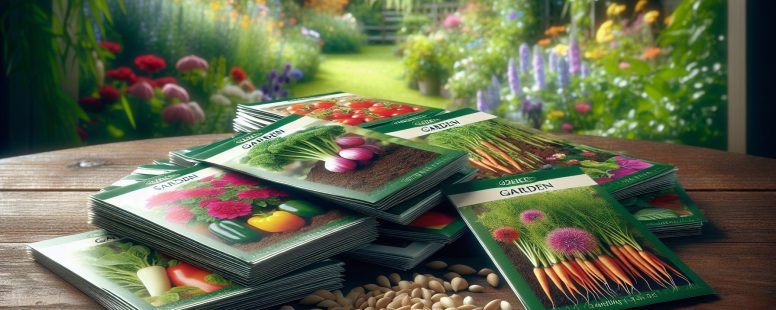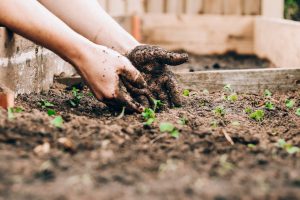Do Garden Seeds Expire? Learn How to Test and Store Them for Longer Life
Understanding Seed Expiration
Garden seeds don’t last forever. The viability of seeds declines over time, affecting germination rates. Understanding how this impacts your planting plans is crucial. Generally, seeds like beans and peas last up to three years, while onions and parsnips may only last one year.
Factors Affecting Seed Longevity
Several factors influence seed expiration. Storage conditions play a significant role—seeds stored in cool, dry places maintain viability longer. Moisture and heat accelerate degeneration.
Testing Seed Viability
Testing seed viability helps determine if old seeds are still usable. A simple test involves placing a few seeds on a damp paper towel, then sealing them in a plastic bag. After a week, check for germination. If the majority sprout, they’re still viable.
Using Expired Seeds
Expired seeds aren’t necessarily useless, but germination rates are often lower. Consider sowing them more densely to compensate. While you might see fewer plants, some could still thrive in your garden.
If there’s anyone who knows how to turn a backyard from a mere plot of grass into a personal paradise, it’s Paul West. With over 20 years in the field, Paul’s insights and practical advice have helped countless individuals create spaces that are not just for show but for real enjoyment. Have you ever strolled through your backyard, dreaming about what it could be? Whether you’re looking to entertain guests, provide a haven for local wildlife, or simply kick back with a book, there’s no better way to make that dream a reality than with Paul’s tried-and-true techniques.
Factors Affecting Seed Longevity
Step-by-Step to a Dream Garden Shed
Building a garden shed from scratch sounds daunting, but it doesn’t have to be. Follow Paul’s detailed guide, and you’ll have a sturdy structure ready in a weekend:
- Select a Location: Find a flat, dry spot away from tree roots and shaded areas. This prevents moisture accumulation.
- Foundation Choices: Gravel beds are fantastic for drainage. Lay out a frame with treated timber for long-lasting support.
- Wall Framework: Use 2x4s for framing. Make sure everything is level; a small mishap can lead to big troubles down the line.
Essential Tools for Every Backyard Enthusiast
Whether you’re a woodworking whiz or a gardening guru, these versatile tools are must-haves:
- Cordless Drill: Perfect for quick fixes and elaborate projects.
- Wheelbarrow: Transporting soil, wood, or debris without breaking your back.
- Garden Fork: Exploring and breaking up soil more effectively than a shovel.
Why not have a kit ready for action? It streamlines your work and ensures you’re not rushing back to the store every time something comes up.
Tips on Hosting Backyard Events
Creating an Inviting Space
Lighting sets the mood, and with a few well-placed solar lanterns, you can transform a standard patch of grass into a cozy grotto. Add cushions and throws for a touch of warmth and comfort. Ever considered a fire pit? They serve dual purposes, as a warmth provider and a central gathering point for your guests.
Food and Drink Stations
An outdoor bar cart filled with refreshing beverages keeps everyone satisfied. Setting up a simple BBQ area isn’t just practical—it adds an enticing aroma that welcomes guests even before they arrive.
Woodworking Wonders
- Custom Planters: Not only do these accommodate your plants, but they add layers and focal points to gardens.
- Birdhouses: Easy to craft, providing both a creative outlet for you and a sanctuary for feathered visitors.
- Decking: Imagine stepping out onto a smooth, leveled deck. Begin with composite materials for durability and minimal maintenance.
A Final Word from Paul
How to Test Seed Viability
Testing seed viability helps ensure your garden’s success. Whether seeds have aged or been stored improperly, knowing how to evaluate them saves effort and maximizes growth potential.
Simple Germination Test
Start with a damp paper towel and place several seeds on it. Roll the towel, ensuring seeds don’t touch each other. Put the roll inside a plastic bag or container to maintain humidity. Check the seeds in 7-10 days for sprouts. Germination rates below 60% might require denser sowing for sufficient plant growth.
Alternative Testing Methods
If the space is tight or precision is key, try the water flotation test. Drop seeds in a cup of water and see what happens. After an hour, seeds that sink are typically viable, while those floating might not be. A saltwater solution increases test accuracy but handle seeds gently, as damage could occur.
Also, use a magnifying glass to inspect seeds for mold or discoloration—a sign of degradation. Combating incorrect storage can further improve results, by keeping seeds dry and cool.
Extending the Shelf Life of Seeds
Understanding how to prolong seed viability can enhance your gardening success. By incorporating specific practices, you maintain seeds’ potential to germinate and grow into healthy plants.
Proper Storage Techniques
Storing seeds in optimal conditions is crucial for extending their shelf life. Keep seeds in a cool, dry location to minimize moisture and temperature fluctuations, which lead to deterioration. An airtight container such as a glass jar or plastic bin is ideal for maintaining these conditions. Also, placing seeds in the back of a refrigerator further regulates temperature and humidity, preserving their viability for extended periods.
Using Desiccants and Containers
Desiccants, like silica gel packets, play a vital role in seed preservation. They absorb moisture and help prevent mold, a significant threat to seed health. Pack the desiccants alongside seeds in an airtight container to maximize their effectiveness. Consider using small, resealable bags for individual seed types; it’s a good way to manage moisture levels uniformly across different seeds. An organized system of labeling and categorizing these bags also assists in maintaining an efficient seed storage strategy, making it easier to track expired or low viability seeds.
Recognizing Expired Seeds
Determining whether your garden seeds are expired is crucial for successful planting. Understanding the signs of reduced viability helps ensure you don’t waste time on seeds that won’t sprout.
Signs of Reduced Viability
Expired seeds commonly exhibit several traits. Seeds appear moldy or discolored with spots of white, gray, or black. The natural firmness fades, with seeds feeling brittle or soft to the touch. A strong, unpleasant odor can also indicate seed spoilage and expiration.
Impact on Germination Rates
Expired seeds reduce your plant yield significantly. Studies show seeds past their prime often result in less than 60% germination rates, compared to the typical 80-90% for fresh seeds. When seeds take longer to germinate than expected, it hints at reduced viability. To avoid failed crops, increase sowing density with such seeds to boost successful germination chances.
Keeping an eye on these signs and adapting your gardening approach based on your seed’s viability helps ensure a thriving garden.
Conclusion
Understanding the lifespan of your garden seeds is key to maximizing your gardening efforts. By storing seeds properly and testing their viability, you can ensure a thriving garden. Remember to keep seeds in cool, dry conditions and use airtight containers to extend their shelf life. Even if some seeds appear expired, they can still be used effectively with denser sowing techniques. With these insights, you’re well-equipped to make informed decisions and transform your backyard into a flourishing paradise.
- Decorating Your Backyard with Homemade Birdhouses: Creative Ideas to Attract Birds & Beautify Your Garden - October 3, 2025
- Creating Stepping Stones with Kids: A Fun Backyard Project for Family Bonding and Creativity - October 3, 2025
- Where Can I Sell Pottery Locally? Best Places and Tips for Selling Handmade Ceramics - October 3, 2025




